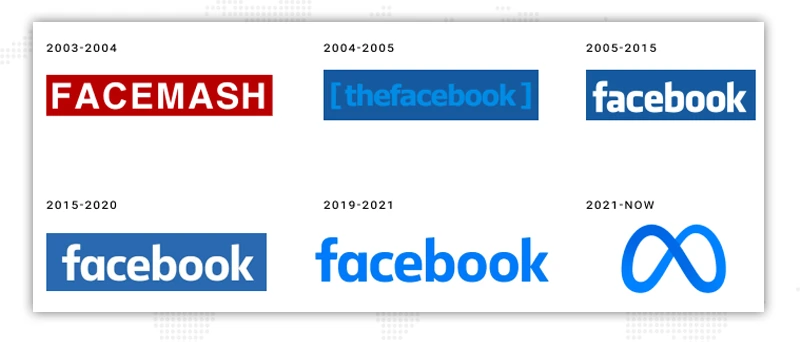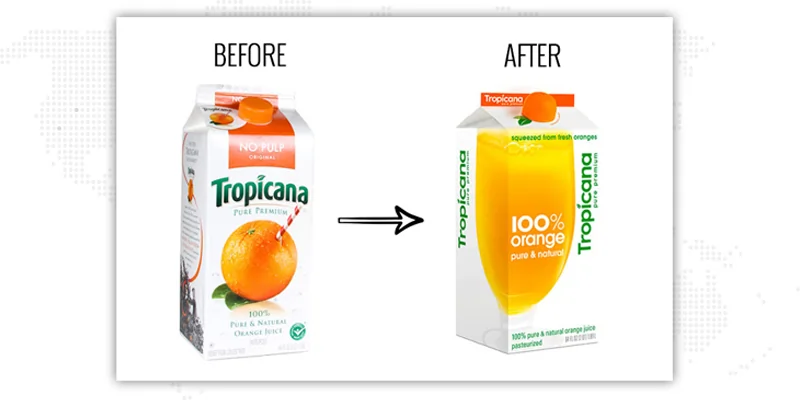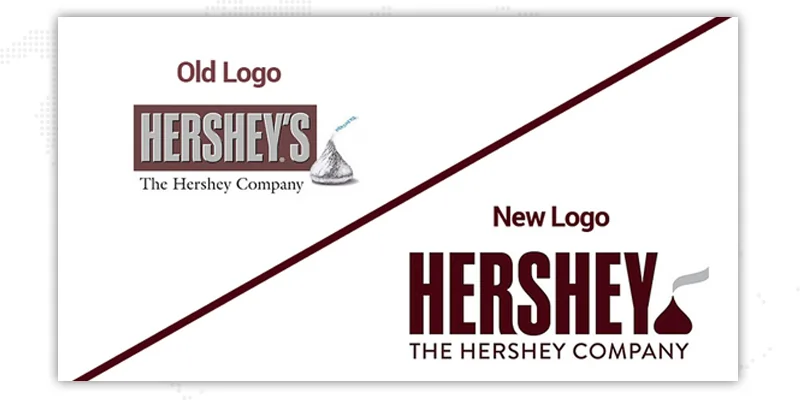
“Branding, as well as the customer, evolves,” Bernard Kelvin Clive says.
Branding and rebranding is a key part of marketing that helps improve customer interactions. Branding helps differentiate your business from the competition. The branding elements help to distinguish you from competitors. Companies can often change how they look to their target customers.
The following guide will help with making a rebranding strategy and developing your brand identity for the growth and development of your company.
Rebranding is a marketing strategy in which companies change their logos and branding by developing their new branding and visual assets. The purpose behind rebranding is to create an identity that differentiates itself among consumers, investors, prospectors, customers as well as employees. When you start a business in an unfamiliar environment, a business owner or entrepreneur needs to know how important branding is. They understand the need for strong branding and the need to do it in an intentional and effective way.
Rebranding focuses more on communicating a brand identity to customers. Brand identities identify a brand's personality, like colors, designs, and logos for the target audience. In addition, branding consultant services are an essential means of marketing to clients and targeting new audiences.
Creating an identity is a strategic endeavor that should include all elements to accomplish the brand identity and business objectives. As a result, brand identities have become the most valuable assets of companies.
Here you can learn how to rebranding and develop an integrated brand identity.
Rebranding a business is very efficient and will help increase its revenues, particularly when you want a modern design and better marketing strategy. Sometimes you simply have to refresh your equipment, but sometimes major changes are necessary. Changing a company's name is not necessarily needed, but this is viewed as a way to revive a company. The branding process is based on developing and using recognizable logos and designs representing an industry.
Looking to Grow Your Brand Online?

However, a rebranding strategy comes with its own set of advantages and challenges. Let’s take a look at them.
Branding is defined as the method used to create a company’s identity, normally based on its slogan, logo, or design. Similarly, SEO includes the use of blogging regularly, social media, marketing the content, internal link optimization and many other digital marketing strategies. During an e-commerce rebrand, your name will include more apt keywords.
Rebranding your business is probably obvious to some, but it can be incredibly helpful in improving your SEO efforts. When updating your business website, make your website more modern and easier for people to understand. For example, make the domain's name more descriptive by adding the keyword. The result is a significant increase in visibility on the Search Engine. To get started, get professional help from a company, but make sure to choose it wisely. They provide great branding services for small businesses as well as large ones.
The right approach will help your business grow. You can rebrand as you would if you had redesigned the product. You can target an individual audience through different names. It's an excellent way to attract new people and meet the unresolved needs of customers.
You can change your strategy to create new branding to increase your influence on consumers. When it comes to targeting the market segments, people want to pay for better products rather than just for cheaper ones.
Rebranding can help you focus on your strengths and create additional strengths that can help you attract and expand customers or enter new markets. Changing an existing brand identity can help you attract large business customers and differentiate you from other competitors. It's going to bring in new customers and fulfill their needs.
Rebranding indicates an organization's change or growth, which can increase its brand identity and awareness. Creating a brand’s identity is essential for increasing sales and customer loyalty. If a company starts redesigning, it should have an effective idea of its new product and vision. Choosing a branding services company that looks into your design and development can be a great add on.
Every new rebrand may not be successful. Rebranding can create confusion and suspicion. On the other hand, a well-defined brand name increases customer loyalty. Customers could benefit from the change, and they could also find it difficult to recognize rebranded businesses. This could potentially reduce sales unless the new brand catches the customer's attention.
Branding, conversely, can help you differentiate yourself and explain what makes you the best choice. Your brand comes from who you were, who you were, and what the people thought.
Probably a stale customer could leave the business if he changed his brand and rebranded. The business should offer the customers what they hope to get. We, humans, have habits. Consequently, when things are different, we feel uncomfortable and are hesitant to react. When a company loses its customer base after having its name rebranded, it's because they might feel it didn't give them similar branding services, products, and quality they had purchased before.
The cost associated with rebranding is considerable. It is not cheap in small businesses. There are multiple aspects that need addressing. You might need more credible people to create new images that voice your brand better. But it's not only names but all logos of companies must also be changed. You can invest in ads and television commercials. Also, you can spend money on creating t-shirt designs, pens, and other stationery.
Companies evolve. Typically to remain competitive, the brands have to develop. It occurs in many ways. Many companies have since rebranded themselves despite being successful. We have seen recurring changes in brands from McDonald's to Weight Watcher and Uber as well. Rebranding can help businesses distinguish themselves from their competition or even avoid losing their reputation, as Uber did.

Over time a brand can become obsolete, which makes considering website redesign services an option. Some successful rebranding examples for large companies include Apple, which rebranded three times, Starbucks (4 times), and Pepsi, which was rebranded 11 times. In addition, Facebook changed its brand name to Meta earlier this year.
Rebranding is complicated and has its risks and costs. Although you won't have to reinvent your company name to rebrand, you will need significant changes in your brand name. Therefore, assessing your company’s upcoming rebranding should be the right thing. Rebranding strategies can give your company new strengths but must complement the overall business plan.
You can sell personalized merchandise, but you might want to expand on your product range by adding personalized pens, diaries, or coffee cups to the range. If your advertising strategy focuses on shirts, your target audience probably doesn't know where you can find them. That is a problem with identifying yourself that is very difficult to solve. Regularly check your clients' profiles for changes and, if so, rebrand your company to target the brand. This is often a problem, and one should be careful to keep their company name short and literal.
In some cases, a company may have the chance to acquire a new market, expand its product range or gain new market shares. If it happens, you want people to know the brand. It was the case with Pabst. Pabst saw the chance to rebrand its craft beer sector.
Pabst was established in 1844. Sales peaked in the 1970s and continued until the 1980s when they began to decline. But after rebranding, from 2001 to 2012, their sales increased from less than 1 million gallons to more than 92 million gallons.
The plan was to take the brand to a new level, but how?
As a result, Pabst encouraged their Field Marketing Managers to take over those markets. It was up to that particular regional marketing manager to figure out what would work. Many people advocated for them to take control of those markets and give each one their own social handle. Rather than posting things from the corporate headquarters, they'd post things that were local and relevant to that city on Instagram. The coolest bars, tattoo parlors, record stores, skate shops, and bike shops were expected to be seen by their counterparts in the brand team when they traveled to a new town. They would be able to hold cans in their hands.

Young businesses often lack an understanding of brand branding or use a generic template to build a new brand identity. As a result, the brand name you use is ruined. Generic branding is difficult because companies competing in similar names often use very similar logo designs. Brand recognition can become problematic when a variety of companies appear similar to one another. It is not easy for businesses and consumers to create brand loyalty unless they are unable to distinguish between them.
Perhaps you have been doing business for a long time. Your 1990's colors can erode your brand and make your company outdated. Maybe your brand doesn't align well with your modern corporate culture. It's difficult to develop a brand identity that is responsive to rapidly changing design trends. However, a single thing must be known for companies that want to compete in a changing economic climate and not lose market share. Modernize your brand image and increase revenue.
Make sure your rebranding goes smoothly. Find out about the competitors. Determine the differences between the competition and the value of the product. Find the best brand fads and compare them. Know what is trendy and adopt the trends which make sense to your firm. Your new branding image should be fresh and relevant. Having a rebranding strategy that fails can cause a lot of damage to your brand. Rebranding is part art, part science.
When you start rebranding your organization, you should know your company's mission, vision, and value system. Think about what makes a firm special for you. Tell us the purpose of your organization. Tell me my corporate identity? How should I know about my company name? Your brand should reflect your message, and it is your message. They serve as a solid platform for your future business. It is impossible to rebrand without that.
Your brand may be your biggest investment, but equally valuable are the people helping your organization thrive. Your marketing plan must take care of them. Include voices across your organization: the best advice is found within departments you might never have anticipated. I find rebranding more efficient and team-oriented. Let people have their say. They represent the identity you are presenting to the clients.
Start with your brand. Your company’s name should reflect your brand identity. This should represent your brand's public image. Start by looking at the company you want to promote. Then, think about the future and how the business will be positioned today. You know the brand of your previous brand, so you could easily blow out of this stage.
Many companies can start with nothing but fresh beginnings. If you are planning to rebrand, you must keep the existing brand virtues in mind. You'll need to create rebranded products that integrate the existing brand and its values. Make sure the changes to your branding reflect your branding. For example, you need to update an existing packaging design or graphic package to showcase your current identity.
Recently Uber stories have been rewritten and rebranded. Uber was faced with huge criticism for the toxic corporate culture and behavior of the drivers. As a result, Lyft began gaining market share. Uber had to completely redesign its brand in order to break its bad reputation. Uber's new story focuses on changing the Uber culture and focusing on drivers and passengers.

Tropicana's Pure Premium orange juice came in a new package in 2009. Soon after, Tropicana announced it would return to its original design.
We need to know what went wrong and how quickly.
The original Tropicana logo was based on an orange with a straw punctured through the middle. The Tropicana logo implied that Tropicana's juice was unadulterated, undiluted, and straight from the orange. Unfortunately, the logo and font used in the previous packaging design were scrapped for a new one and did not provide adequate alternatives.
In the new packaging, Tropicana's orange juice was depicted in a large, flat orange gradient. In addition, the old Tropicana font was retired in favor of a more modern one that lacked any distinguishable features.

Known for its sweet chocolate treats, Hershey's is a well-known company. It's a shame that the company's 2009 rebrand received so much attention, but it wasn't for the right reasons.
Hershey's rebranding objective was to honor the company's history while also preparing for the future with a more contemporary logo design.
A silver-wrapped Hershey's Kiss sat on the far right side of the company's original logo, which was a three-dimensional representation of their name. Despite the new logo's use of a flat, modern style and font, the old logo's familiar shape is still evident. Although the reworked Kiss looks like a brown, stylized steaming poop, it's still a fun song. It did not go unnoticed.
Before making a rebranding decision, it must be clear what the types of rebranding are used for. This guide is intended for people who want a complete re-branding and not just showcasing a few things. Generally speaking, a well-known brand should have a partial redesign. However, a complete revamp would be a good idea in some cases.
They are often simple updates, such as updating the logo or modifying the company's colors. It's less intensive than full branding. It involves updating any existing logos and print materials. If you plan on implementing rebranding, you will need more experience with rebranding.
The more established the business, the more it loses in the process. Depending on your company's mature nature, a partial rebrand can be beneficial as well as help your brand maintain the loyalty and rebranding of its image.
In order to completely redesign the business removing the brand from the market. The entire brand rebrand requires labor and resources. This could work mainly when the brand has no connection with the targeted market.
If a company combines existing brands for a new brand, the rebranding process would require that the company establish a brand identity. It would also make sense to rebrand both companies.
Change has always been deemed an unavoidable fact. In today's fast-paced, technology-driven world, all firms try to meet consumers' needs. Rebranding is difficult, but the process is beneficial for the business owner. However, if not properly performed, it may result in major failures.
Before launching your new company, ensure there is clear and concise intent. Do you need help identifying your new identity? It's crucial to establish a purpose before creating structures for rebranding.
When considering implementing the rebrand, it is best to first determine if the brand needs rebranding completely or partially. Afterward, identify what demographic your rebranding campaign will target. Finally, redefine your vision, mission, and values – this definition is your guideline.
Finally, it is important that a brand rebrands. Your brand voice is where you write every marketing article. You speak formally or causatively or funny, and so forth. It is wise to change your brand voice to reflect your new tone of voice when rebranded. Let's not ignore that bots all make their new names equally, so let us first determine the most appropriate partial and total rebranding options.
A key component of a successful rebrand is changing your logo. The use of an identity-changing logo can tell customers your brand has evolved from the past. For example, you may want to improve your look by using different color combinations.
Besides changing your logos, you must also change the brand position. The only solution would be changing colors and logos. However, your marketing materials must convey a message. Changes to the brand position can tell customers the purpose and vision you want.
Once your brand name has been identified, you should create new content with that message in mind. These ads will explain to consumers how you want to improve your brand. It can attract new customers as well as expand your audience.
Rebranding gives you an opportunity to refresh and rethink the primary point of contact between you and your customers. No matter the size of your business, strong brand recognition and trust lead to increased sales, but if your branding lacks balance and has confusion or low quality, it can easily be lost in the crowded marketplace.
It takes a lot of time and effort to build a brand! Customers may be unsure of what they're seeing, even when it appears to be a positive change. However, your brand's rebranding efforts will not go in vain if you do more research.
Looking to Grow Your Brand Online?

P
Very interesting! Great insights on the Tropicana and Hershey’s branding story.
R
Very well put. Great suggestions.
R
What an enjoyable read.
R
Could you tell more about the Uber rebranding story?
R
Great read.
M
I have used some of the suggestions you mentioned above while rebranding my company last year. I loved reading the blog. It has been put together nicely.